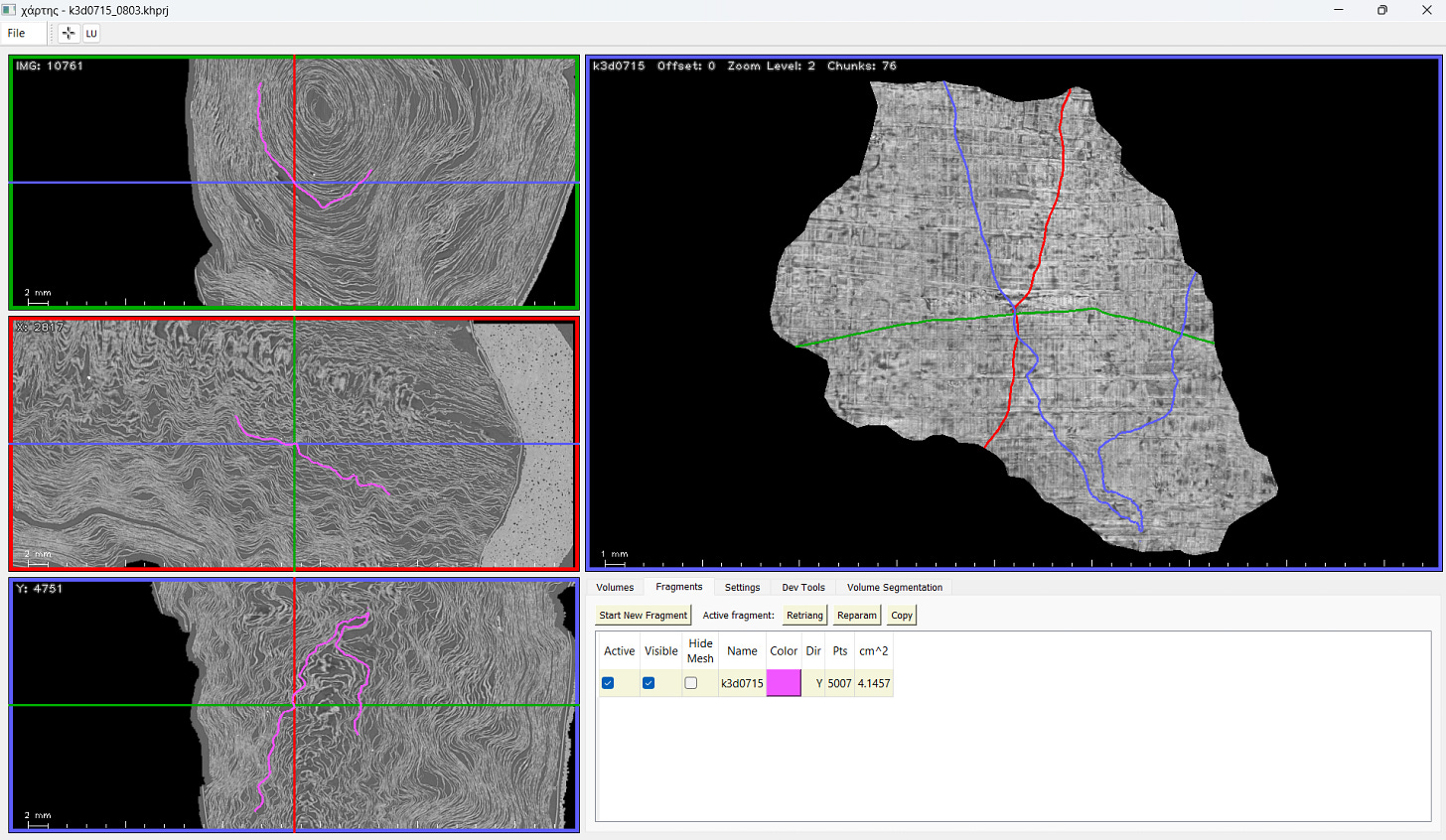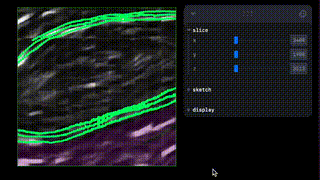$41,000 in Progress Prizes awarded for August contributions
The Vesuvius Challenge community is the gift that keeps on giving
It’s a huge month for community contributions and progress prizes, with $41,000 in awards for some amazing scroll tools that are being created! Read on to learn more, and don’t miss our community survey at the bottom of the newsletter! Congratulations and thank you as always to these contributors that are helping us recover the Herculaneum papyri from the ashes of Mount Vesuvius:

3 x $10,000 (Denarius)
Johannes Rudolph (@jrudolph) has continued adding features to the Vesuvius Challenge Segment Browser (GitHub), which has become an indispensable resource for navigating the scroll segments generated throughout Vesuvius Challenge. In addition to a segment directory visualizing the many segments across all scrolls, individual segments can be closely inspected in the browser along with the ink predictions on their surfaces. For taking a quick look at segment data, definitely check out this tool!

Inspecting a segment from inside Scroll 1 using the Segment Browser. James Darby (@james darby) is hard at work supporting the effort to create volumetric instance segmentation datasets for the scrolls. Among other improvements to the Napari 3D viewer, a new feature uses existing mesh segmentations to seed the volumetric segmentation, roughly cutting in half the time required to label a cube of data. James has also provided great tutorial videos for this tool. This work is in use by our team and community and has led directly to higher output of annotated cubes!


Viewing mesh intersections with a volumetric cube; using those meshes to seed the initial volumetric labeling. Chuck (@khartes_chuck) is back at it again with Khartes, a tool for interactive scroll viewing and segmentation. The khartes3d-beta branch now contains a version that supports 3D meshes of arbitrary shape, unlocking a new set of potential segments that can follow more challenging regions of the papyrus. Discord has more information and some community tips in these discussions. You’ll want to take a look if you’re interested in the $60,000 First Title Prize!

Following twisted surfaces using Khartes3D.
4 x $2,500 (Sestertius)
Johannes Rudolph (@jrudolph) has rescaled a set of scroll fragment surface volumes to 7.91 um so they can be used with ink detection models that expect the 7.91 um resolution used by e.g. the 2023 Grand Prize submission. The provided README contains more information about their creation and usage!


Example rescaled layer from the Fragment 3 dataset along with its corresponding ink labels. Will Stevens (@Will Stevens) has done some initial investigations into autosegmentation, and experimented with flood fill-based approaches. In addition to the provided code, the included report reviews many experiments and is a great introduction to the challenges of segmenting the Herculaneum papyri!


Naive flood fill shows many papyrus sheets confused as one; flatness-affinity flood fill more cleanly separates sheets. James Darby (@james darby) has created a prototype for converting volumetric segmentations to meshes! This will be a required step for volumetric segmentation approaches, as the segments ultimately need to be converted to mesh format for flattening and ink detection. The included README shows a number of approaches and their outputs.
Arefeh Sherafati (@arefeh) and Louis Schlessinger (@ls_96) wrote a detailed report reviewing patch aggregation methods for ink detection, showing how changing the aggregation of individual ink predictions can quantitatively and qualitatively affect the output images. The report includes Python notebooks for easily reproducing the plots and figures!
1 x $1,000 (Papyrus)
Yao Hsiao (@Yao Hsiao) and Dalufishe (@Dalufish) added more features to wj-wt-ftt, a web-based tool for inspecting and labeling scroll data. They’re also working on a tool using Flask and Electron that will allow Python-based analysis tools to be combined with browser-based interfaces! More info here.

Comparing 3D ink predictions with volume data in wj-wt-ftt.
Vesuvius Challenge Community Survey
Please complete our community survey so we can get to know you and make Vesuvius Challenge as successful as possible! All questions are optional. Lurkers are also encouraged to submit!





